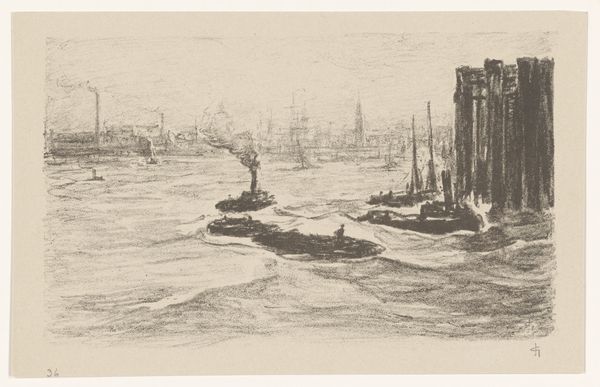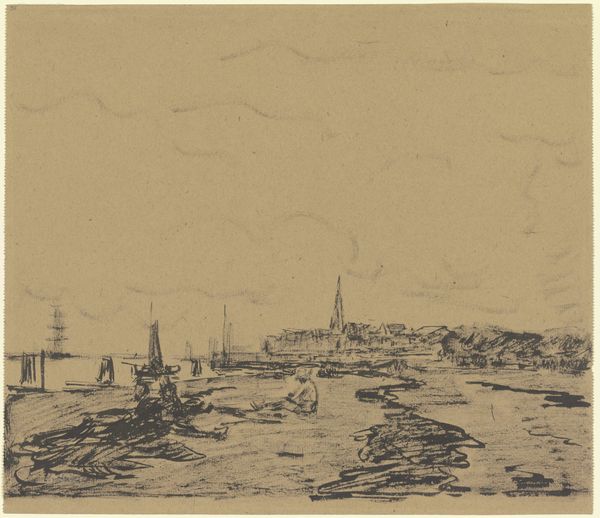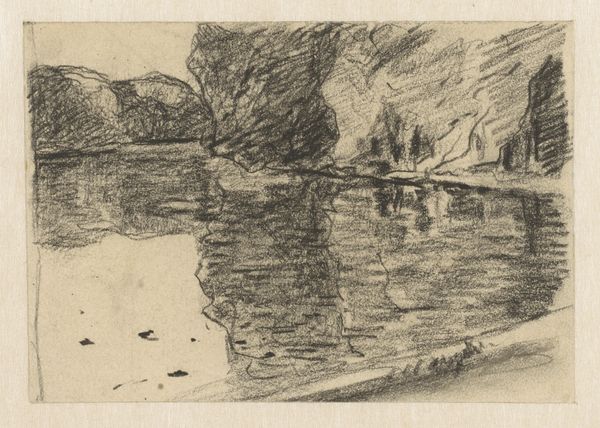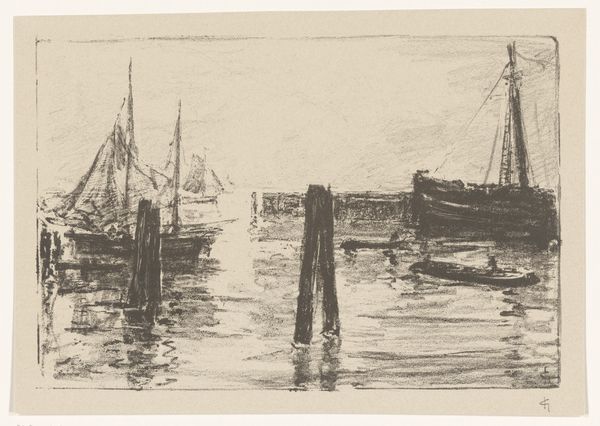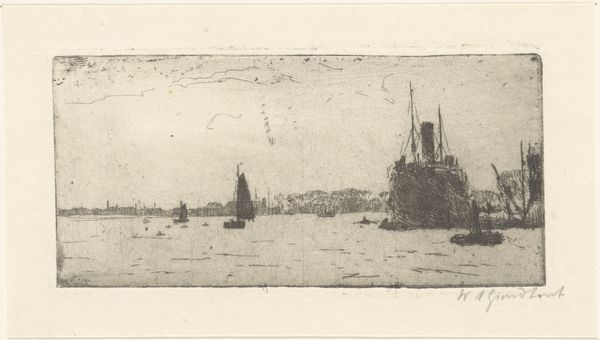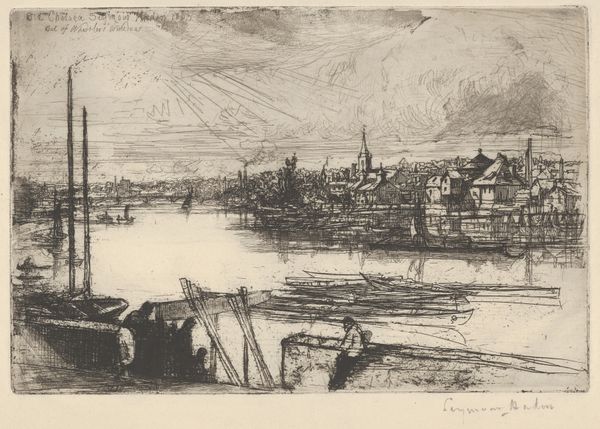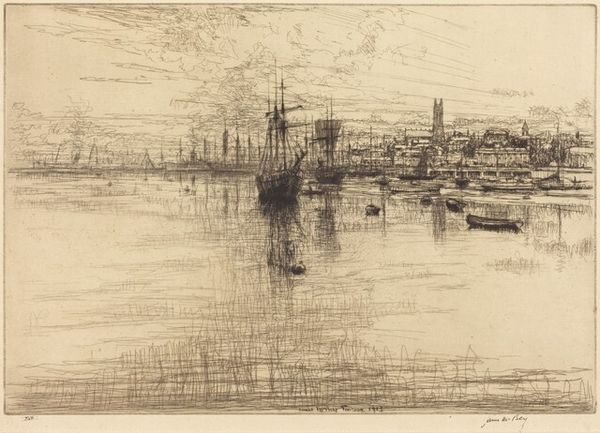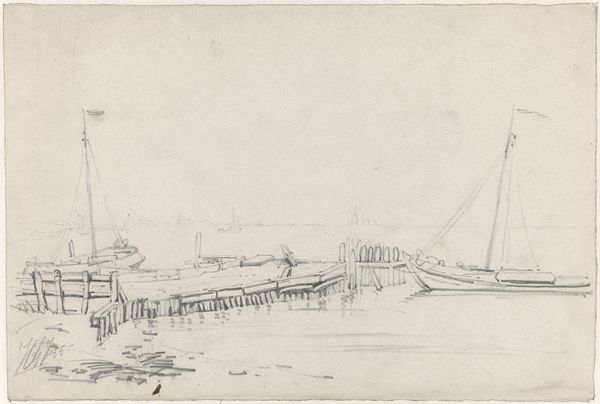
drawing, ink
#
drawing
#
amateur sketch
#
light pencil work
#
pen sketch
#
pencil sketch
#
incomplete sketchy
#
landscape
#
river
#
ink
#
ink drawing experimentation
#
pen-ink sketch
#
line
#
pen work
#
sketchbook drawing
#
cityscape
#
initial sketch
Dimensions: height 75 mm, width 124 mm
Copyright: Rijks Museum: Open Domain
Editor: This sketch, titled "Schepen op de Maas in Rotterdam," believed to be made sometime between 1888 and 1934 by Willem Adrianus Grondhout, uses ink and pencil to depict a harbor scene. What immediately strikes me is the contrast between the loosely sketched, almost chaotic, linework in the foreground and the slightly more defined structures in the background. What can you tell us about this piece? Curator: Considering this work from a materialist perspective, let’s first address the chosen media: ink and pencil. These are readily accessible, relatively inexpensive materials. Their use here, coupled with the sketch-like quality, suggests a focus on process, on the act of seeing and recording, rather than a polished finished product destined for a high art market. Does the “incomplete sketchy” nature signify the artist's social or economic standing and relationship to art as labor? Editor: That's interesting! So, the choice of readily available materials points to accessibility and perhaps a specific socio-economic context for the artist's practice? Curator: Precisely! The cityscape depicted reflects the growth of Rotterdam as a port. Consider how industrial development provided opportunity and wealth but also entailed immense physical and societal labor. How does the work mediate the boundary between "fine art" and craft in depicting labor and infrastructure, for instance? Does this sketch, through its raw and immediate quality, challenge traditional notions of artistic skill and value within a rapidly industrializing society? Editor: So, it's not just a cityscape, it's also commenting on the labor and materials that create that cityscape. I never thought about art in that way! Thanks for showing me new ways of looking. Curator: My pleasure. Considering art in the context of production and the realities of material existence provides many insights into cultural values.
Comments
No comments
Be the first to comment and join the conversation on the ultimate creative platform.
